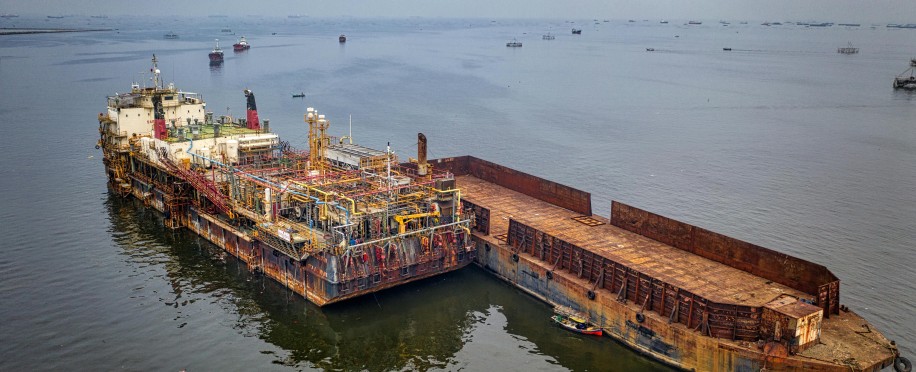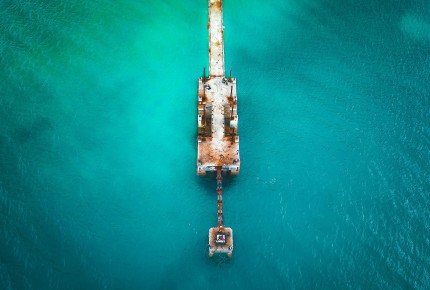Copyright © 2025 lmitac.com All Rights Reserved. Contact - Terms and Conditions - Privacy Policy - Quality Policy - Become an instructor - Vacancies - Sitemap
London Maritime Academy is a trade name for London Premier Groupversion: 2.9.0
London Maritime Academy is a trade name for London Premier Group

Posted on : 2/22/2025, 8:57:49 PM
Maritime vessels and structures face difficult and dangerous conditions, whether on sea or in sea, and electrochemical corrosion is one of these dangers that impact the safety and efficiency of maritime and marine structures onshore and offshore.
Thus, cathodic protection (CP) is a mandatory and effective method to protect metal and steel surfaces from corrosion without impacting the efficiency of the working ship.
Today, we will help you understand cathodic protection systems with a comprehensive CP guide on work technique, corrosion control systems, CP application, types, and benefits of cathodic protection training for KSA students.
Cathodic protection is a technique used in the maritime industry to mitigate, prevent, and control metal and steel materials in seawater from corroding because of the wide electrochemical interaction between the metal surface components and surroundings.
We can say that cathodic protection (CP) is one of the best and simplest used high-see technologies for ensuring marine vessel security by reducing metal electrochemical corrosion (rust) formation.
Moreover, the cathodic protection control method is essential for maintaining surface and structure safety and reducing maintenance costs for ships, pipelines, and underwater equipment even in the hardest marine environments.
However, cathodic protection is also used in other industries and services on the ground to protect an underground pipeline, buried infrastructure, or another type of metal surface from common chemical corrosion.
Although cathodic protection systems are highly effective applied corrosion prevention solutions for water-submerged sites, tanks, and pipes, but it is categorised as simple metal corrosion control systems.
The cathodic protection prevents electrochemical corrosion by converting passive (anodic) surfaces into cathodic (aggressive) surfaces and preventing them from being corroded.
This direct electrochemical corrosion protection technology is usually done by using a more reactive material or an external electrical current to shift potential electrochemical corrosion away from the protected steel, prevent the steel from losing electrons, and control the corrosion process.

As we mentioned earlier, cathodic protection is commonly used in the maritime industry to prevent corrosion on metal materials, and there are mainly two methods of CP systems that are used on vessels and marine infrastructures:
This cathodic protection method is simple, requires no external power, and is commonly used to protect smaller marine infrastructures and ships.
Furthermore, this CP system uses a connected sacrificial metal, that needs to be more active metals (like zinc, aluminium, or magnesium), compared to the protected structure, to corrode instead of the basic structure and prevent rust formation.
The called ICCP is ideal for large ships, offshore platforms, and underwater pipelines, this CP system uses an external power source to apply a controlled electric current to the protected metal and prevent corrosion.
This electrical current protects the steel or metallic surface from corrosion, moreover, the special anodes (like titanium or graphite) last longer and provide stronger protection from corrosion than the one in SACP.
Professional maritime engineering courses in Dubai focus on the main applications and uses of cathodic protection systems in the maritime industry, which include:
The maritime safety organisations, including the IMO, highly focus on the importance of current cathodic protection due to these amazing benefits:
Cathodic protection (CP) prevents effectively rust and metal corrosion, which leads to maintaining structural integrity, enhances long-term durability, and by default increases the ship’s lifespan.
When you protect your ship with the right cathodic protection (CP), then you will prevent metal corrosion, reduce the frequency of major repairs and replacements, and lower downtime and maintenance costs for shipowners.
A smooth, safe, and corrosion-free vessel hull means that your ship will require less drag power in the water, and improve fuel efficiency, leading to lower general fuel consumption and better overall performance.
The hull corrosion prevention will not only benefit the ship itself from breakdowns or accidents, but also lower the risk of oil leaks, structural failures, and hazardous material spills that would protect the marine environment badly.
Cathodic protection systems are considered a cost-effective technique in corrosion control compared to the required costs to fix corrosion damages, thus, it is considered a proven and efficient solution that ensures continuous ship protection.
The use of cathodic protection (CP) is considered highly valuable in many aspects, especially in guaranteeing the safety of the ship and crew while shipping on water.
That is why most maritime professionals from the KSA invest in maritime engineering courses to understand the protection and safety concepts more and empower their careers and businesses.